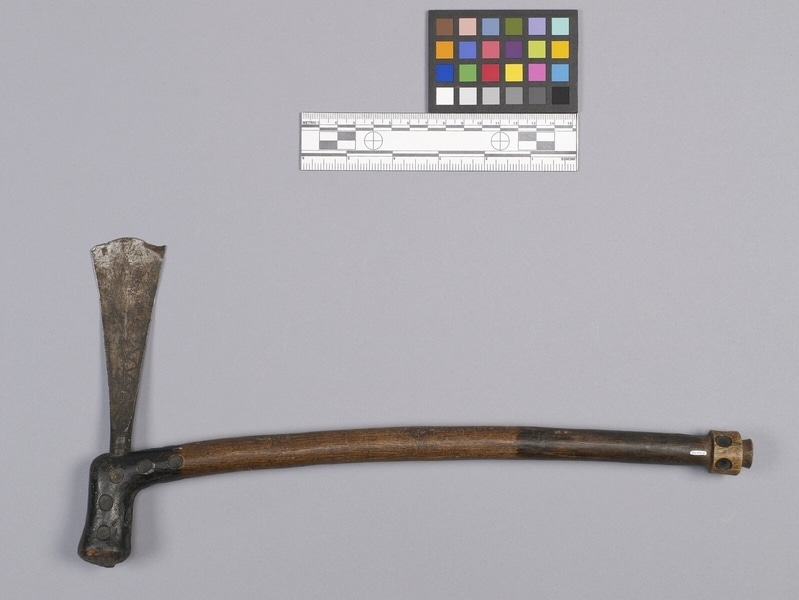Axe Item Number: Ac244 from the MOA: University of British Columbia

Description
Brown wood shaft with blackened ends. One end is an angled, upturned knob which is elbow-like and with carved rows of evenly spaced recessed circles arranged around the circumference and following a right-angle turn. Attached by tang through the knob's middle is the metal blade with its flattened sides facing to the right and the left. Rows of small pock marks and incised lines decorate the sides. Carved butt end has elevated wood ring with row of evenly spaced black recessed circles.
History Of Use
Axes have a wide range of uses, including cutting meat, bones, trees, branches and bushes. They were mostly used for cutting down trees and branches, and to clear bushes to prepare land for farming. In largely forested areas, sometimes "slash and burn" is the preferred method for clearing lands for agriculture.
Cultural Context
utilitarian
Narrative
The collector, Nellie Taylor, served as a nursing missionary (1900-1920), first with the Ovimbundu at Bihe, then with the Chokwe at luma Kasai. She belonged to a group who sponsored several missions across Central Africa from 1881-1931.
Item History
- Made in Luma Kasai, Angola before 1920
- Collected between 1900 and 1920
- Owned by Nellie Taylor
- Owned by Gladys G. Cameron before January 12, 1979
- Received from Gladys G. Cameron (Donor) on January 12, 1979
What
Who
- Culture
- Chokwe
- Previous Owner
- Nellie Taylor and Gladys G. Cameron
- Received from
- Gladys G. Cameron (Donor)
Where
- Holding Institution
- MOA: University of British Columbia
- Made in
- Luma Kasai, Angola
When
- Creation Date
- before 1920
- Collection Date
- between 1900 and 1920
- Ownership Date
- before January 12, 1979
- Acquisition Date
- on January 12, 1979
Other
- Item Classes
- metalwork
- Condition
- good
- Accession Number
- 0509/0017